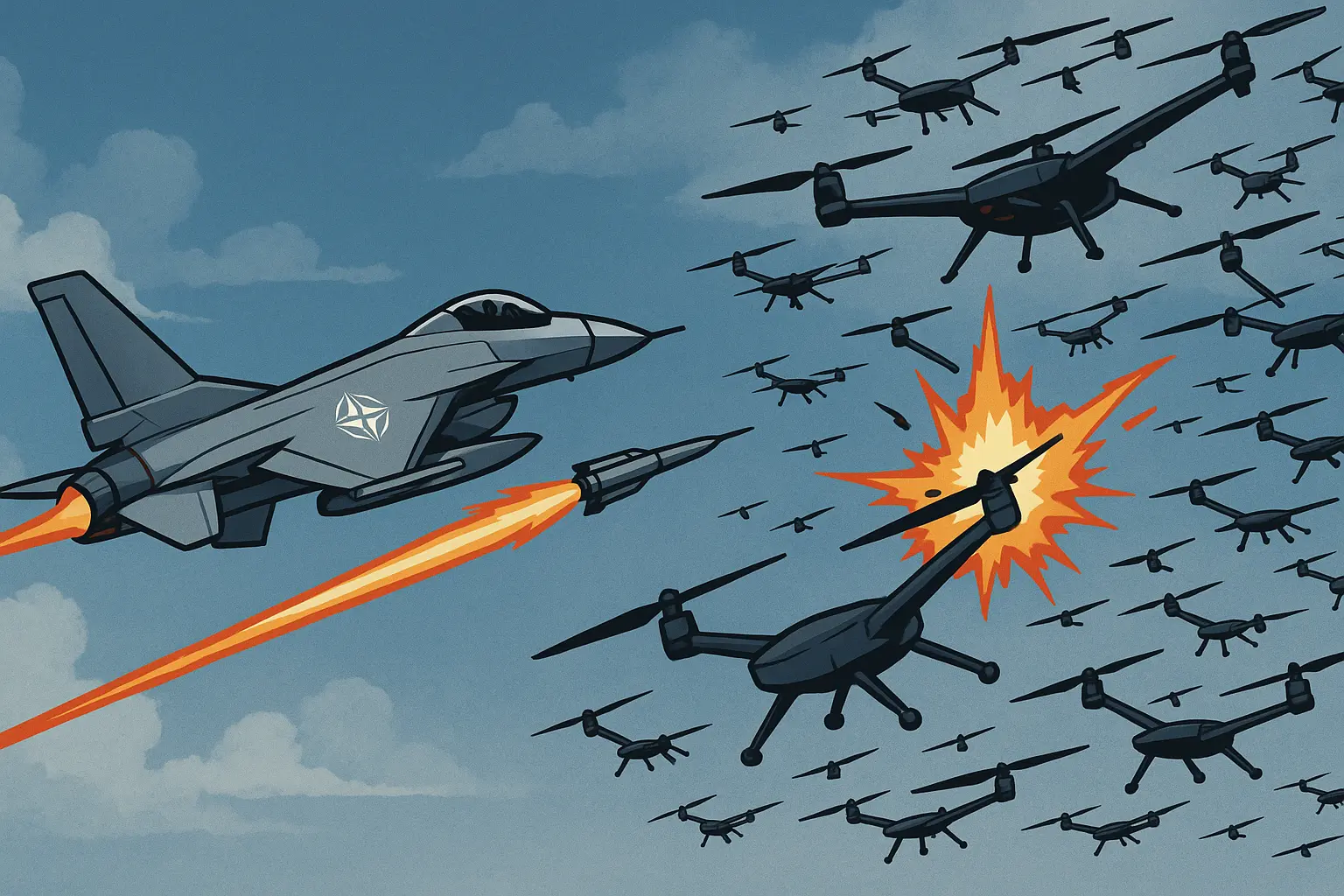
⚠️ What Happened in Poland
Nearly two dozen Russian drones crossed into Poland, a NATO member state.
Polish and allied fighter jets—including F-16s and Dutch F-35s—scrambled to intercept them.
Airports across Poland temporarily shut down as a precaution.
One drone (or debris) struck a home in eastern Poland, causing damage but no injuries.
In response, Poland invoked Article 4 of NATO, calling for urgent consultations with allies.
This was the first time NATO directly shot down Russian drones inside alliance territory since the Ukraine war began.
🛸 Why Drones Are a Game-Changer
Unlike traditional weapons, drones are:
Cheap and disposable → Some cost as little as $20,000, compared to multimillion-dollar fighter jets.
Hard to detect → Flying low and small, they often evade radar systems.
Mass-produced → Swarm tactics can overwhelm even advanced air defense.
Dual-purpose → They can spy, disrupt, or act as kamikaze weapons.
This mismatch creates a dangerous imbalance: expensive defenses are forced to counter waves of cheap drones, draining resources quickly.
🌍 Why It Matters to NATO & the World
Escalation Risks
The incident shows how quickly a local war can spill into wider Europe. If even one drone caused civilian casualties in Poland, NATO could have faced pressure to respond militarily against Russia.Civilian Safety
Closing airports and rerouting flights revealed how drones threaten not just armies but also daily life—air travel, energy grids, and homes.Security Gaps
NATO’s reliance on costly jets and missiles to shoot down drones highlights a vulnerability. Without better counter-drone tech, even wealthy militaries can be stretched thin.
👩💻 What This Means for Gen Z
Cyber & AI Factor: Many drones are AI-guided or remotely hacked. The wars of the future may be fought as much with algorithms as with soldiers.
Job Market Impact: Drone tech, cyber-defense, and aerospace are growing industries—today’s crisis is tomorrow’s career path for engineers, coders, and defense analysts.
Everyday Vulnerability: From airports to power grids, civilian life is more exposed. Young people may grow up in a world where defending against drones is as important as preventing cyberattacks.
🧩 The Road Ahead
Poland has pledged to massively upgrade its air defenses, investing in electronic jamming systems, radar improvements, and low-cost interceptors. NATO is also reassessing its playbook—recognizing that the next world war, if it comes, may start with drones, not missiles.
✍️ Final Word
The Russia–Poland drone incident was more than just a headline—it was a glimpse into the future of warfare. For Gen Z, who live in the most connected, tech-driven era in history, this is a reminder that the battleground of tomorrow is already here, hovering silently in the skies above.

Leave a comment
Your email address will not be published. Required fields are marked *